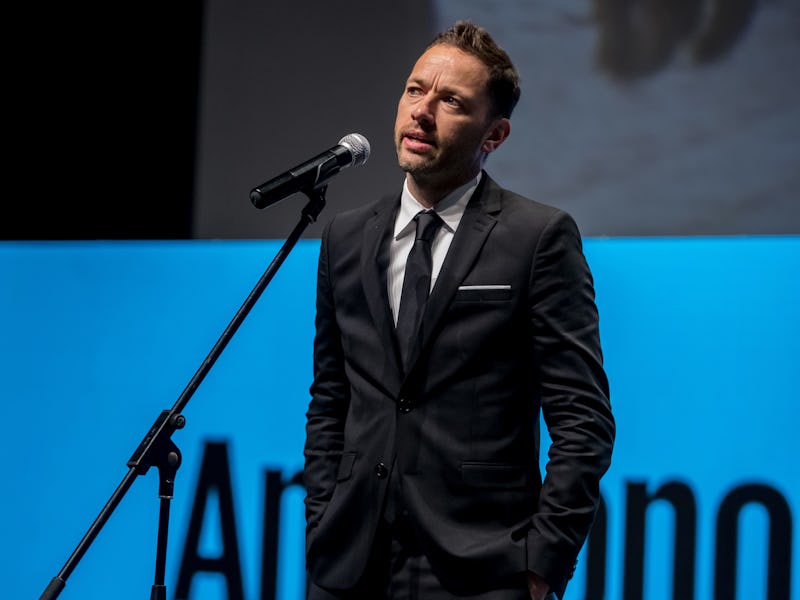How to Make a 'World War II' Movie As It Disappears Into the Past
The filmmaker talks to 'Inverse' about casting Cillian Murphy and Jamie Dornan in his historical thriller.

Plenty of us have seen World War II movies, but not many have seen wartime films about Operation Anthropoid – the plot to assassinate Nazi SS officer Reinhard Heydrich by Czechoslovakian resistance fighters Jozef Gabčík and Jan Kubiš. British filmmaker Sean Ellis took up the challenge.
Inverse sat down with Ellis to chat about why World War II movies are still vital today, and how he struck a cinematic balance while fictionalizing a vital historical event.
Why tackle a World War II movie now?
I don’t think there’s any rhyme or reason. I’ve been preparing this since 2001, and I don’t say, “We should get this ready for 2016.” For me it’s about how I’m just obsessed with telling this story. The more I found out about it the more I thought, “This is what I want to make.”
How thorough did you get in your research into Operation Anthropoid before making the film?
Reading lots of books is the start, then looking on the internet. Then you actually go to the places and start interviewing people. You look through documents at the Ministry of Defense, you go to the war museums. You try to get lots of opinions, but the trouble with this story is everyone has an opinion about it. There’s three or four different stories about things that did or didn’t happen. You get all this conflicting information and, in a weird way, you’re a detective trying to piece it together in a way to tell it. What’s truth and what’s not? What feels like truth and what doesn’t?
Director Sean Ellis
Operation Anthropoid had been previously told on-screen in films like Operation Daybreak or the Czech film Atentát, but those haven’t been big hits. How did you want to separate your film from the way this story has been told before on-screen?
Filmmaking has changed a lot since those films. You look at them now and they’re dated. It’s a story that needs to continually be told… like 99 percent of the world doesn’t know about it. It’s a chance to tell the world a story that happened in a very culturally specific place but has universal themes. That’s movie-making gold.
What was the casting process like searching for the perfect Jan and Jozef?
They have to work together, so they have to complement each other. We cast Cillian first after he responded well to the script. Once he was in place it was simply: Who is his Jan? I hadn’t seen 50 Shades of Grey, but I had seen Jamie in The Fall and loved him in it, but I thought he was too dark for the role.
We met and talked about his character being a kind of puppy dog to Jozef, and somebody who doesn’t want to go through with it and maybe physically can’t. After that it felt right, so I talked to Cillian who said, “We’re both Irish, and I love him.”
Dornan and Cillian Murphy as Jozef Gabčík in 'Anthropoid'.
The film also establishes a gorgeous setting of occupied Prague. What was it like turning the modern city back 70 years?
I went to a lot of libraries in Prague and bought a lot of photo books from the period, and what we did was gather a collection of locations from the photographs. We’d go to the place with the photos, and we’d stand in the same spot to see how much it changed from 1942. We’d set up cameras in the same spots and then give the reference photos to the CGI team. It was easy because we had the costumes and cars. Then they painted stuff in and added the atmosphere and look of those photographs into the location stuff we shot.
Ana Geislerova, director Sean Ellis, Charlotte Le Bon, Cillian Murphy, and Jamie Dornan.
Jan and Jozef’s perspective is so important to the movie, and it’s jarring when they’re separated in the film’s cathedral-set climax. Subconsciously you realize it’s all going wrong because they’re apart.
When I was writing the script, part of me wondered why they weren’t together when they died. In Operation Daybreak, they’re shown together doing a weird cuddling thing and shooting one another, which I never really understood. We had a scene where Jan goes downstairs and tells Jozef that the Germans are coming, and they say goodbye. The problem with that is there’s no way Jozef wouldn’t have fought alongside Jan. In a weird way what’s lovely is that you get to see Jan’s shocking end, but Jozef’s is more of a release or an acceptance. It pushes you into the end credits